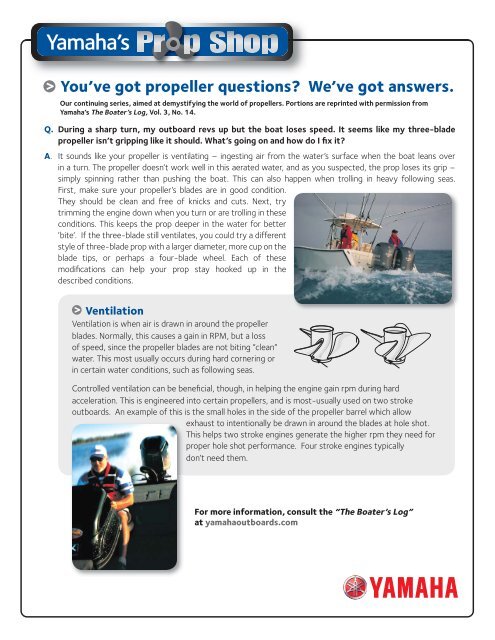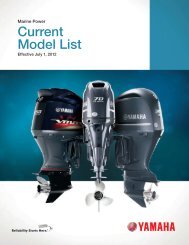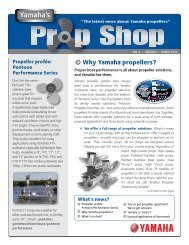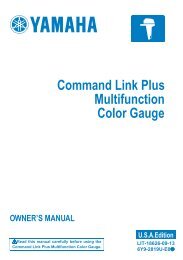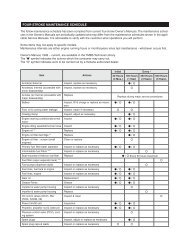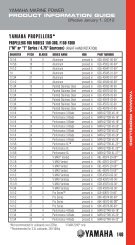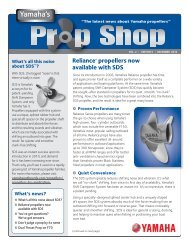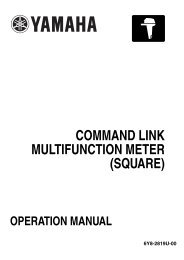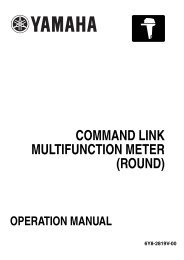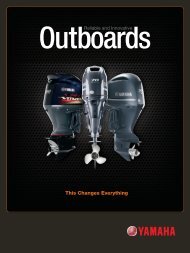Prop Shop VOL 1 EDITION 4 - Yamaha Outboards
Prop Shop VOL 1 EDITION 4 - Yamaha Outboards
Prop Shop VOL 1 EDITION 4 - Yamaha Outboards
Create successful ePaper yourself
Turn your PDF publications into a flip-book with our unique Google optimized e-Paper software.
<strong>Yamaha</strong>’s<br />
You’ve got propeller questions We’ve got answers.<br />
Our continuing series, aimed at demystifying the world of propellers. Portions are reprinted with permission from<br />
<strong>Yamaha</strong>’s The Boater’s Log, Vol. 3, No. 14.<br />
Q. During a sharp turn, my outboard revs up but the boat loses speed. It seems like my three-blade<br />
propeller isn’t gripping like it should. What’s going on and how do I fix it<br />
A. It sounds like your propeller is ventilating – ingesting air from the water’s surface when the boat leans over<br />
in a turn. The propeller doesn’t work well in this aerated water, and as you suspected, the prop loses its grip –<br />
simply spinning rather than pushing the boat. This can also happen when trolling in heavy following seas.<br />
First, make sure your propeller’s blades are in good condition.<br />
They should be clean and free of knicks and cuts. Next, try<br />
trimming the engine down when you turn or are trolling in these<br />
conditions. This keeps the prop deeper in the water for better<br />
‘bite’. If the three-blade still ventilates, you could try a different<br />
style of three-blade prop with a larger diameter, more cup on the<br />
blade tips, or perhaps a four-blade wheel. Each of these<br />
modifications can help your prop stay hooked up in the<br />
described conditions.<br />
Ventilation<br />
Ventilation is when air is drawn in around the propeller<br />
blades. Normally, this causes a gain in RPM, but a loss<br />
of speed, since the propeller blades are not biting “clean”<br />
water. This most usually occurs during hard cornering or<br />
in certain water conditions, such as following seas.<br />
Controlled ventilation can be beneficial, though, in helping the engine gain rpm during hard<br />
acceleration. This is engineered into certain propellers, and is most-usually used on two stroke<br />
outboards. An example of this is the small holes in the side of the propeller barrel which allow<br />
exhaust to intentionally be drawn in around the blades at hole shot.<br />
This helps two stroke engines generate the higher rpm they need for<br />
proper hole shot performance. Four stroke engines typically<br />
don’t need them.<br />
For more information, consult the “The Boater’s Log”<br />
at yamahaoutboards.com


